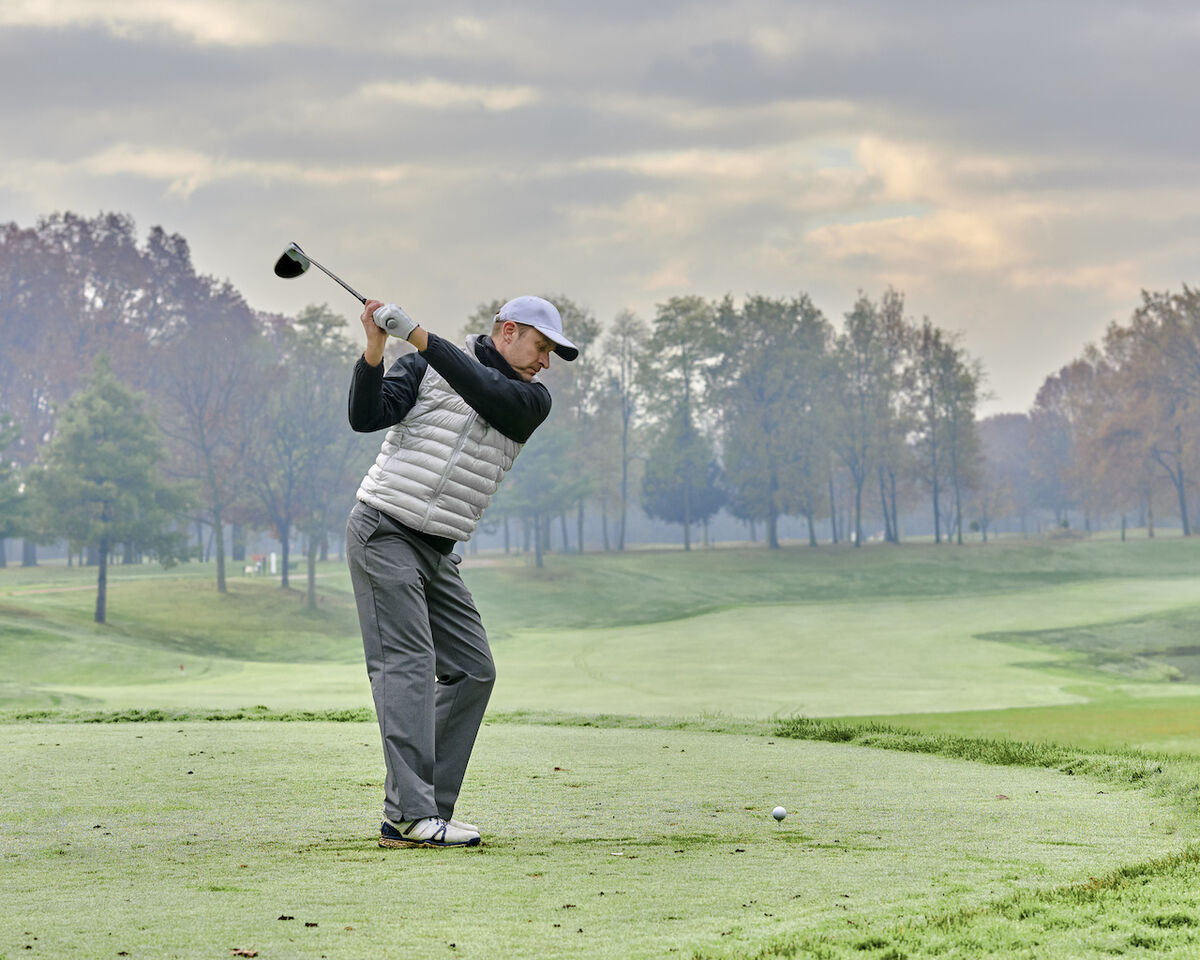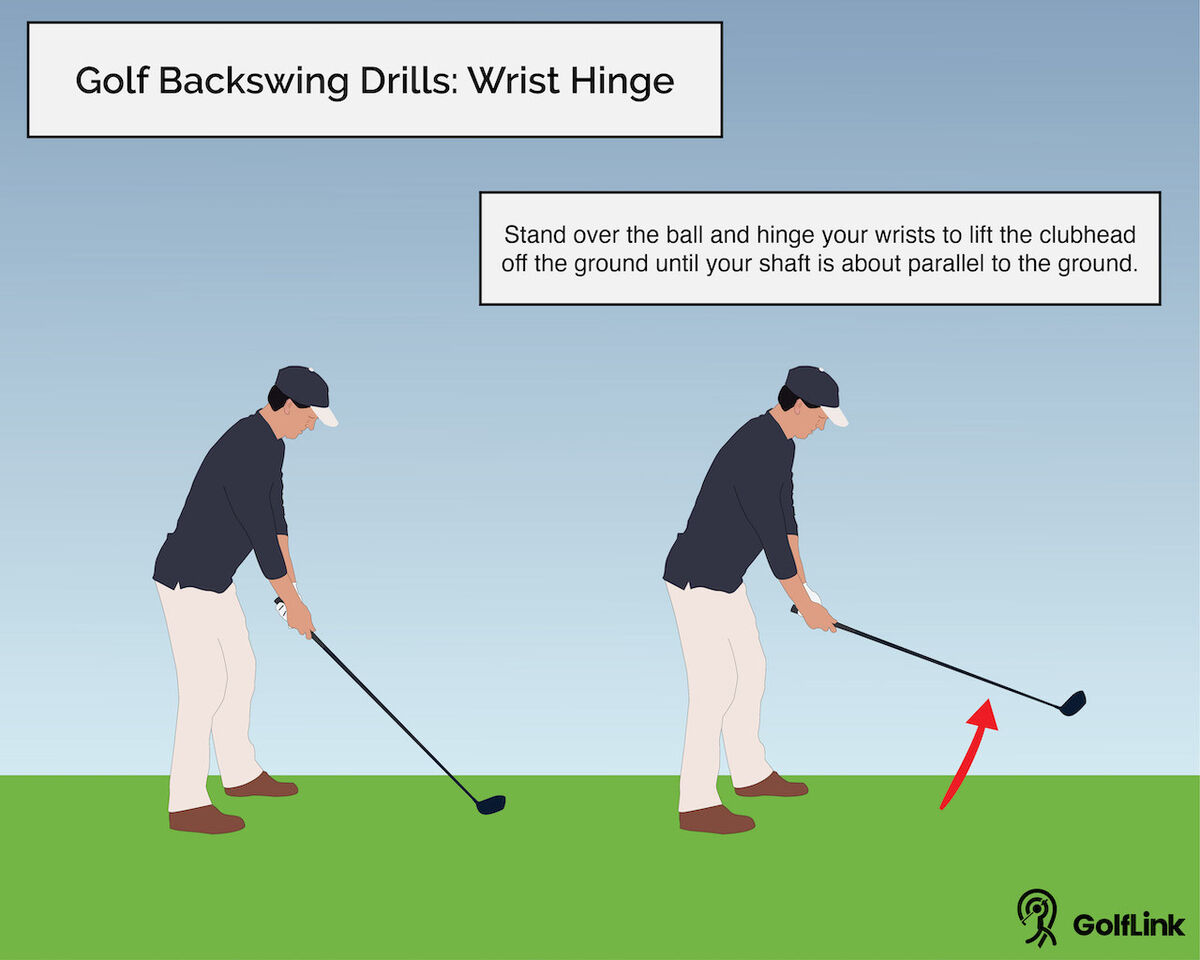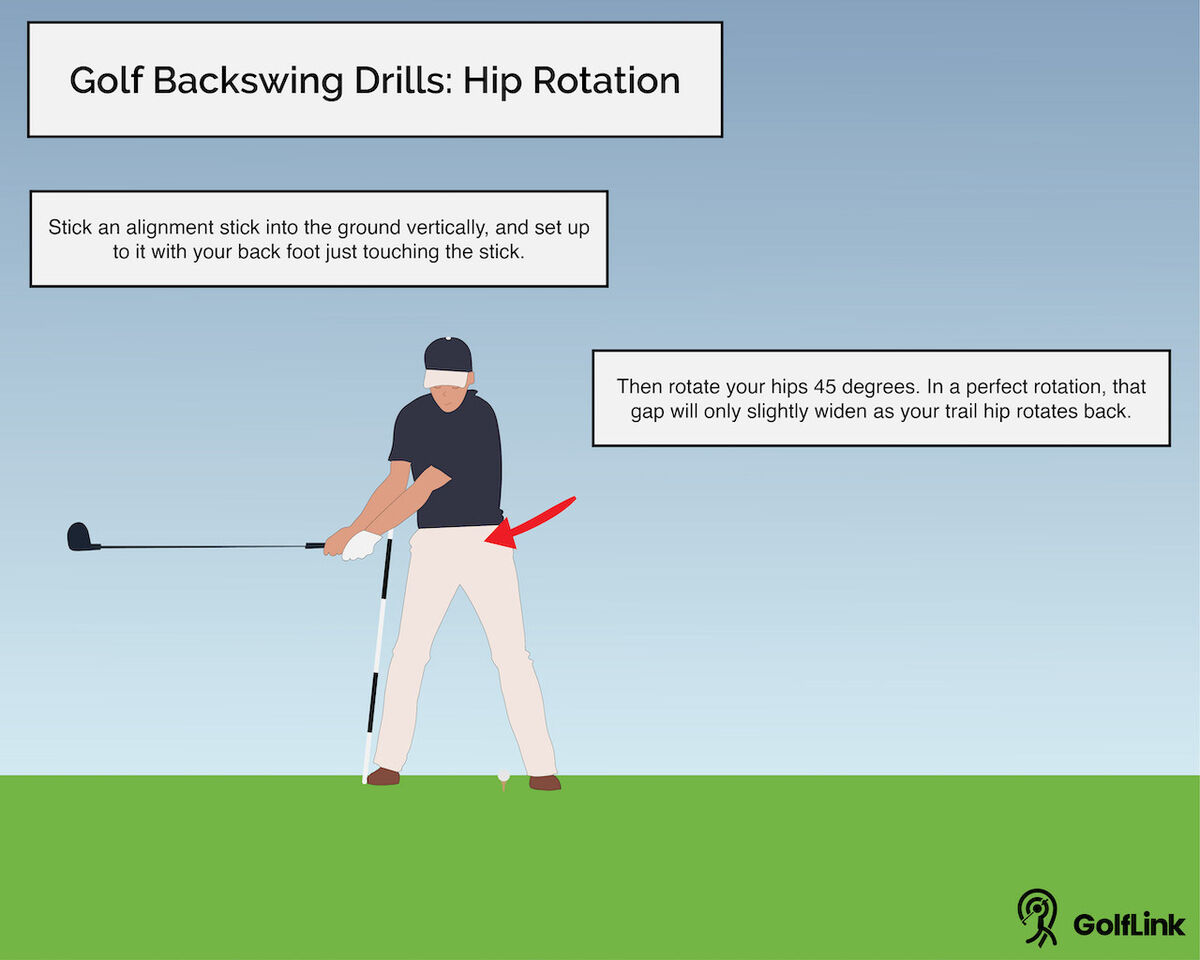The Correct Golf Backswing From Start to Finish

To paraphrase a popular saying in tournament golf, you can’t win a tournament on the first day, but you can lose it. That exact principle applies to each and every golf swing, your backswing in particular. You can’t guarantee a good shot in your backswing, but you can guarantee a bad one. Here’s how to make a great golf backswing, and repeat it every time.
Overview of the Golf Backswing
The golf backswing, also known as the takeaway, sets up your entire swing. A good backswing looks effortless and simple, but in reality, there are a lot of moving parts. The good news is that each element of the proper backswing is fairly simple, and with some diligent repetition, your takeaway can be as repeatable as tying your shoes.
The purpose of your backswing is to get your body and club in a position at the top to make an easy and efficient downswing into great impact. You want to swing the club on the proper plane, rotate your body and shift your weight into the right positions to make this as easy as possible.
Let’s take a look at those moving parts within the golf backswing.
Wrist Hinge
As you take the club back, your wrists hinge up and down. To illustrate the proper wrist hinge from your setup position, simply hinge your wrists to lift the clubhead off the ground until your shaft is about parallel to the ground, without moving anything else.
Many golfers struggle to hinge their wrists properly, and instead either cock their wrists in, which moves the club head away from the target, or up towards the sky which almost always leads to a monster push or slice. Either of these moves can kill your swing before it even begins, so take a few minutes to practice hinging your wrists properly and work on repeating that feel.
The Turn
In a proper backswing, your whole body rotates away from your target. But exactly how you execute this turn separates a good swing from a bad one.
- Shoulders: Your lead shoulder is the engine of a great shoulder turn. To isolate this move, turn your lead shoulder until it’s under your chin, or as close as you can get it. During your shoulder turn, allow your lead forearm to rotate naturally with the rest of your body to keep the club on the proper plane. When you combine the shoulder turn with the proper wrist hinge, you’ll find you’re already in about a half backswing, with the club shaft behind you and parallel to the ground. To complete your backswing, you simply need to get a little more of your body involved.
- Hips: Rotate your hips about 45 degrees, which will allow you to make a nice 90-degree shoulder turn, or close to it. It’s important to rotate your hips without sliding laterally, which is why we share our favorite hip-rotation drill later on in this article.
- Arms: Use your arms to guide the club back and up throughout your backswing.
During a great turn, you’ll simply rotate around your spine. This ensures you don’t sway in either direction and also keeps you in your posture throughout the swing, which is crucial to a successful swing.
At the top of your backswing, most of your weight should be on your trail foot, and you should feel wound up, ready to un-coil through the downswing and into the ball. Your trail leg should remain steady, loaded up and ready to release.
Golf Backswing Sequence
Once you can execute each of the proper moves of the golf backswing, it’s time to marry them all together into one fluid takeaway. By the time you’re done, you’ll have an effortless, smooth-looking backswing. Here’s how to put them all together in sequential order.
- Shoulders and hips: Begin your takeaway by starting your shoulder and hip turns simultaneously. This will feel natural as your shoulders and hips easily work together.
- Wrist hinge: As your shoulders and hips begin to turn and move the club head back, add your wrist hinge.
- Arms: Once your club is moving back, your shoulders and hips are rotating and your wrists are hinging, let your forearm rotate naturally to keep the club on plane, and use your arms to take the club to the top of the backswing.
Golf Backswing Drills
Wrist hinge and hip rotation are two massive pain points in the backswing. So many players go wrong by botching one of these moves, making recovery nearly impossible. Nail your wrist hinge and hip rotation with these drills.
Wrist Hinge

An easy way to illustrate the proper wrist hinge is to isolate the action. Stand over the ball and hinge your wrists to lift the clubhead off the ground until your shaft is about parallel to the ground. This is the proper wrist hinge to emulate during your backswing.
Hip Rotation
It’s important to rotate your hips without sliding laterally. To master this move, stick an alignment stick into the ground vertically, and set up to it with your back foot just touching the stick. This should leave just an inch or two of space between the sitck and your back hip.

Now rotate your hips 45 degrees. If you notice your hip bumping the alignment stick as you rotate, you’re swaying away from your target. If you notice that gap between your hip and the alignment stick significaltly widen as you rotate, you’re swaying towards your target. In a perfect rotation, that gap will only slightly widen as your trail hip rotates back.
Work on this drill until you can rotate your hips without swaying with ease, and check in every month or so during the golf season.
Get Swingin’!
Practicing a proper backswing is not nearly as exciting as taking your driver to the range and going for max distance. But bringing a sound and repeatable backswing to the course is much more valuable than a long drive.
There’s a popular quote that applies to many sports but couldn’t be more applicable than it is to a golf backswing. “Don’t practice until you get it right, practice until you can’t get it wrong.”
Give your backswing the proper attention, and you’ll be set up for success on every shot.